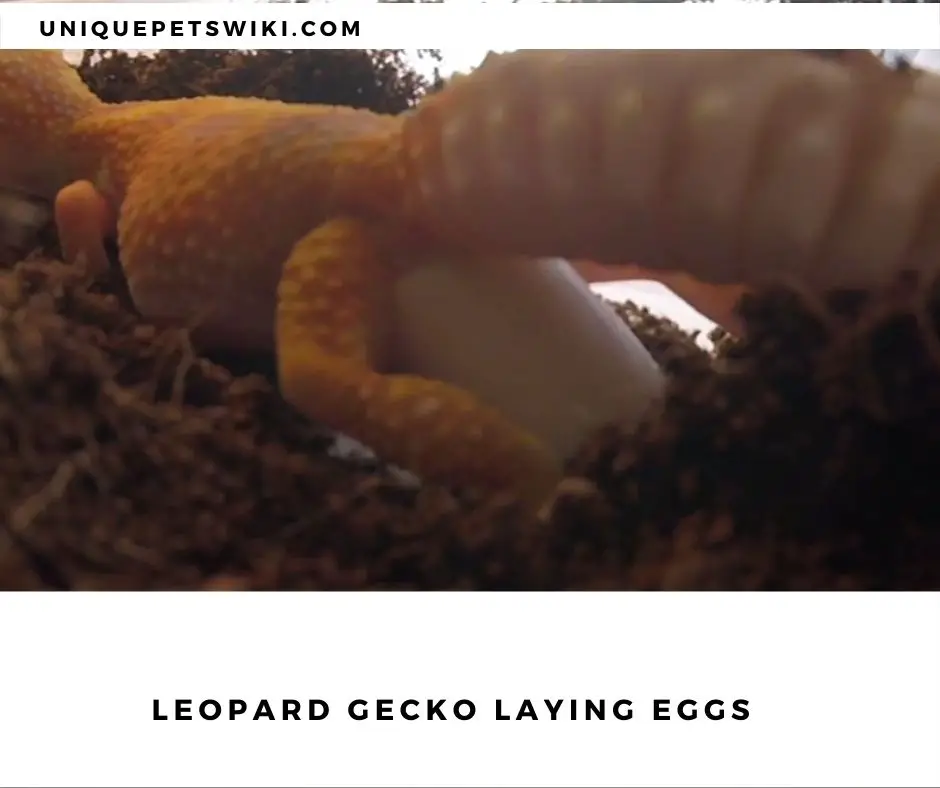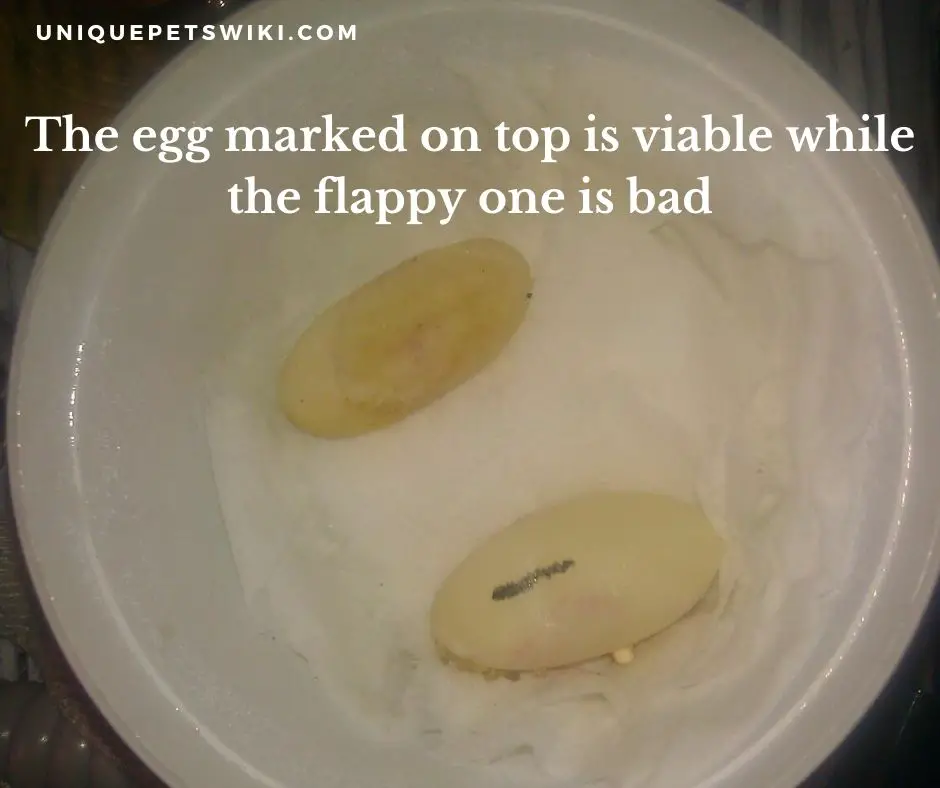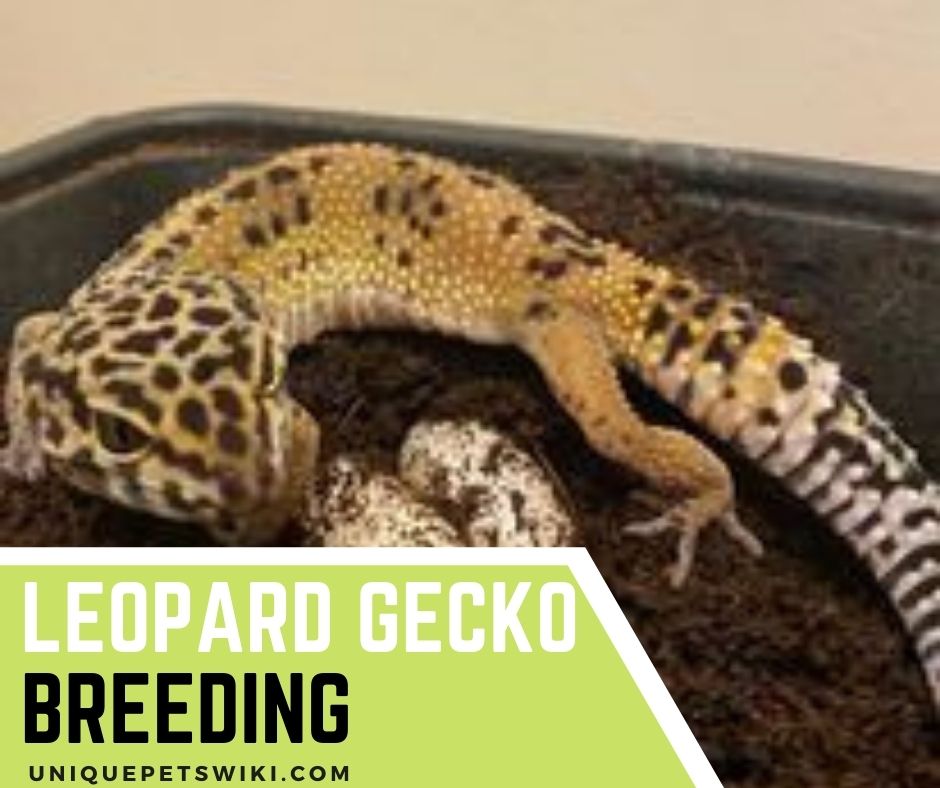Leopard geckos are docile reptiles with easy-care levels, making them among the most popular pet reptiles out there. They are hardy lizards with lots of interesting personalities. Leopard geckos are in demand due to their wonderful personalities, and you may be wondering if you can breed them in captivity.
Breeding of leopard geckos is an exciting process from the beginning to the end. Leopard geckos are among the easiest reptiles you can breed, but you will need to do a lot of research and prepare to help ensure your breeding pair is safe and happy.
In this article, we will provide you with enough information that you need to know to help make your leopard gecko breeding easy and successful.
Contents
Everything About Leopard Gecko Breeding
Generally, leopard geckos breed by the mating of the male and female. The female will then lay an egg that will then hatch into a hatchling. A fascinating thing about leopard gecko is that the temperature where the egg is kept will help to determine the sex of the hatchling leopard gecko.
Female leopard geckos usually lay their eggs under logs or rocks in the wild. The eggs are usually soft and will harden and develop a protective shell after some time. It will then take around 6-10 weeks before the eggs are incubated based on the temperature.
When Can Leopard Gecko Breed?
Just like other reptile species, the size and weight of a leopard gecko will determine its sexual maturity. Leopard geckos usually become sexually mature when they weigh around 35-40g between 18-24 months old.
Leopard geckos will start breeding if you keep a male with at least two females in an enclosure. Gecko owners can encourage breeding by shortening the day and reducing the gecko’s enclosure’s temperature zone to 70-75°F for 4-6weeks.
Breeding Season of Leopard Gecko
In the wild, the breeding season of leopard geckos usually starts in January or February and can last until September. Your female gecko will mate and lay eggs several times during the breeding season. However, leopard geckos can mate all year-round in captivity.
Since leopard geckos are crepuscular reptiles, they typically mate at night when they are active.
The Habit Of Finding A Mate And Mating
You can determine that your leopard gecko is about to breed when they start to circle each other. This is usually a short process and can take about 2-5 minutes.
During courtship, the male leopard gecko will show interest in a female gecko by approaching it. The male will then circle round the female and will either lift up its tail or move it side to side. Once the male finishes inspecting the female and finds her desirable, it will dash towards her.
It is recommended that you monitor the courtship closely because leopard geckos can show aggression towards each other during the period. This can then cause severe injuries if you are not there to separate them.
As stated above, a male leopard gecko will rattle its tail when approaching the female. The female gecko will then turn and respond to the male’s advances. She will then freeze up and stare directly at the male when it is ready to mate. They will take some time to size each other up before the male stops rattling its tail to approach her quickly.

The male will quickly climb on the female’s back and then bite her neck to position itself. It is normal for a male to bite, but you can separate the geckos if you notice any bleeding. After successful mating, the male will separate from the female, and you can place the geckos in a different tank.
However, if the female is not ready to mate, it will back away or attack the male aggressively.
Things You Need For Breeding Your Leopard Geckos
Although it is easy to breed a leopard gecko, breeding your leopard gecko is more than just placing a male and female together in an enclosure. This is because your gecko will need certain conditions and environments for the breeding to be successful.
In the section below, we will highlight the things that you need for breeding leopard geckos.
Selecting Leopard Geckos Breed
The first thing that you will need for breeding a leopard gecko is the breeding stock. You will need a male and 1-2 female leopard geckos that are completely healthy and in good shape for the breeding process.
When selecting the broodstock, the first thing is to sex your leopard geckos properly. There are two characteristics that differentiate a male gecko from a female gecko.
It is quite easy to differentiate adult leopard geckos as the male is quite larger with visible pre-anal pores above their tail base. The pre-anal pores look like a line of dots that forms a V shape at the tail’s base. This is not present in female geckos.
You can also identify the male by the oval-shaped hemipenal bulges.
Tank For The Female Geckos
You can house a single female leopard gecko in a 10-gallon tank but using a 20-gallon tank is more comfortable. This way, it can be quite easy to introduce the male for mating and then return him to its enclosure.
However, if you want to breed more than a female, the tank should not be less than 20-gallon. This is because there should be space where your geckos can explore and hide. There should also be extra space for the time that you want to introduce the male.
Tank For The Male Geckos
The minimum tank size for housing a male leopard gecko is a 10-gallon tank. However, housing it in a 20-gallon tank is more suitable. It is recommended to house a male leopard gecko in another tank and then introduce it to the female tank for mating.
After mating, you can then return your gecko to its enclosure.
How To Encourage Leopard Geckos To Breed
Your gecko will start breeding if you house both the male leopard gecko with the female. However, you can encourage your gecko to breed by reducing the temperature zone in their enclosure to about 70-75°F for 4-6weeks.
It is likely for the male leopard gecko to start the mating ritual by vibrating its tail while the female stands still. Mating is usually quick and can last for a few minutes.
Taking Care Of Leopard Geckos After Mating
After mating, you will need to remove the male gecko from the female. You can then place an egg box in your female gecko’s tank, where it can lay eggs when ready. The egg box can be filled with vermiculite or peat moss and should be covered. However, there should be an entry and exit spot for your leopard gecko.
Leopard geckos spend a lot of nutrients and energy during breeding. You can then take care of your gecko by feeding it with crickets at least every other day or even leaving a dish of mealworms in the enclosure. You should not forget about gut loading the feeder insects as well.
Instead of dusting the insects, you can ensure your gecko gets enough supplements by placing a jar filled with supplements in their tank. This helps your gecko to decide when and the amount of supplement to take. Fresh water should also be readily available in your gecko’s enclosure.
Gestation Of A Leopard Gecko
After mating, female leopard geckos will lay the eggs in about 20 days. Female leopard geckos usually lay clutches of eggs which is about 1-2 eggs. Furthermore, a single female will lay several clutches of eggs in a single breeding season.
All you have to do is provide a laying box where your gecko can lay the egg.
How To Care For Female Leopard Geckos During Breeding?
Your leopard gecko is ready for breeding once it starts to ovulate. It is also possible for female leopard geckos to start producing eggs during the ovulation period. Some of the signs to help you determine that your leopard gecko is ovulating are stated below.
- Lack of appetite
- Swollen Abdomen
- Slow movements
- Stressed Behaviors/Cranky Attitude
- Visible Eggs (Uncommon)
Taking Care Of Leopard Geckos During Ovulation
Once you have confirmed that your leopard gecko is pregnant, some of the ways that you can make it healthy and happy are stated below.
- Keep your gecko’s tank in an area free from loud sounds
- Ensure you feed your gecko with vitamin supplements.
- Place a nesting box in your gecko’s tank.
- Isolate the gecko from any other pets during the ovulation stage
- Be careful and slow whenever you are interacting with your gecko.
- Reduce how often you handle your gecko as much as possible.
Leopard Geckos Lay Egg
Everything you need to know when a leopard gecko lays eggs is stated below.
The Habit Of Laying Eggs
Leopard geckos don’t usually look after their offspring. In the wild, leopard geckos lay their eggs in a safe location like under the rocks, sand, and logs and then go her way. It will take the eggs 35-90 days to hatch, and the success rate of hatching is quite low because of environmental conditions and predators.
When hatched, the hatchlings also need to fend for themselves.
Egg deposition in the wild and in captivity is quite similar, but you just need to provide a nesting box where your female gecko can lay the eggs. When ready, the female leopard gecko will crawl into the box, lay two large eggs, and then bury them.
It will then leave the box to rest and drink water. The female gecko will lay another clutch of the egg once every 2-3 weeks all through the breeding season.

Appearance of Leopard Gecko Eggs
Generally, a healthy leopard gecko egg is oval in shape with a chalky white appearance. After laying the eggs, the shell will start to harden when exposed to air. When you touch it, it has a leathery texture and feels like fine white paper.
When your leopard gecko eggs start to turn brown, it means that it is spoiling or going bad. The internal color of a fertile leopard gecko’s egg usually has a pink or red color. However, infertile eggs are usually yellow.
How To Care Leopard Gecko Egg
After your gecko lays its eggs, it is your duty as the owner to take utmost care of the egg to help ensure the egg hatched successfully. You can take care of your leopard gecko eggs by following the steps below.
Generally, leopard geckos don’t care for their young ones. This means it is your duty as a leopard gecko owner to help ensure the eggs are safe and that the eggs hatch into newborns. The first thing to do is provide a suitable egg box where your leopard gecko can lay eggs.
Egg Box
The egg box should be between 7x7x4 inches in size to help enable your gecko can easily get in. The egg box should then be filled with a substrate like vermiculite. Once the female gecko has laid the egg, you can then remove the egg to prevent damage.
Caring for leopard gecko egg is quite easy and not that demanding. All you need is to have the right material. However, leopard gecko eggs will be incubated between 35-90 days based on the incubation temperatures.
Incubation Material
When you want to hatch leopard gecko eggs, the first equipment that you will need is an incubator. This is because you need to place leopard gecko eggs under a controlled condition to help ensure it hatches. Furthermore, the incubator should be filled with about 1-2 inches of incubation medium like vermiculite.
The vermiculite will help ensure the eggs incubates very well. Choosing incubation mediums from pet stores is recommended because they are usually free from parasites and chemicals. You will also need water to moisten the substrate during incubation.
Ensure The Incubator Is Set Up Correctly
Leopard gecko eggs can easily spoil or collapse if the temperature or humidity goes below or above the standard range needed. This shows temperature and humidity are important for the successful hatching of leopard gecko eggs.
A humidity of around 80% is suitable for hatching, but you should be on the lookout for molds. The incubation temperature should be between 85-87oF, and if the temperature goes below 74oF or above 93oF, the egg may not hatch.
The fascinating thing is that the sex of a leopard gecko can be determined using the incubation temperature. Eggs incubated at 80oF will lead to all females, while all males will hatch if incubated at 90oF.
The recommended substrate for an incubator is 50% vermiculite and 50% perlite and should be 1-2 inches deep.
How To Tell If A Leopard Gecko’s Eggs Are Bad?
Leopard gecko eggs will be infertile if the female gecko lays egg without mating with a male for a long time. When you are not sure whether an egg is fertile or not, the best thing is to put all the eggs into the incubator and wait until they stink before you decide it is infertile.
There are times that you candle an egg, showing that it is fertile but can turn bad during incubation. This means that the hatchling died during incubation. You can easily spot that a leopard gecko egg turns bad as it will start to smell, grow mold, dented, discolored, or leaking.

Sex Of Baby Leopard Gecko
It is possible to determine the sex of your leopard gecko hatchlings once they are about 3-4 months. However, this requires a lot of experience. It will become easier to identify the gender of a leopard gecko once it is six months old.
Conclusion
As you can see, leopard geckos are among the easiest reptile species that you can use to learn how to breed reptiles. You don’t have to be afraid of trying it out as you will get to enjoy a rewarding experience producing a new generation of leopard geckos.
By following the steps outlined above and with a bit of luck, you could find hatchling leopard geckos in your enclosure in no time.
